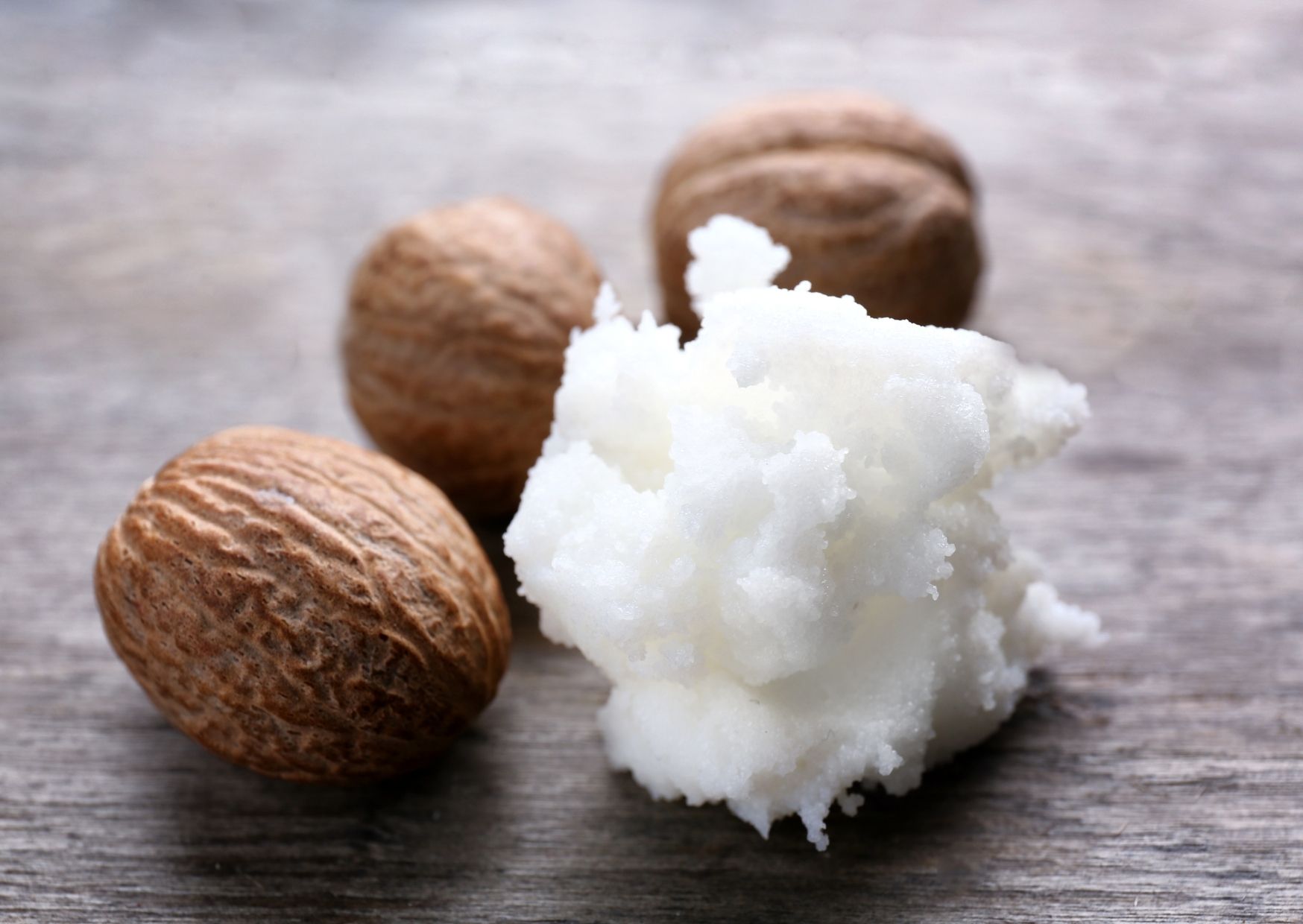No products added!
22 September 2022
0
In general, if we should choose or think about one ingredient that symbolises Africa, it would be shea butter. We all have heard about it, we know about its hydration qualities, brands have used it, spoken about it, built story-telling about it, so it seems quite common. But still, this ingredient deserves to be celebrated for its magical properties. Most people don’t even have an idea of what a shea nut look like, how it is cultivated or what is necessary in order to benefit from all of its advantages!
First thing, shea nuts grow on a 10 meter tree from western, eastern and central Africa (Senegal, Nigeria, Guinea, Benin, Tchad…). It takes around 15 years to collect its first fruits, that gives an idea of how a noble material it is despite how common we think it is. African people have used shea butter and oil for centuries. They cook it or use it for its cosmetic properties.
I remember as a child, whenever an aunt was coming to visit us from Africa, she always brought some shea butter for us. I didn’t really like when my mother insisted to apply it on my hair or skin. I thought is was too smelly and I prefered to use that blue or green ultra sheen jelly cream that she used sometimes for my hair. I didn’t know at that time the value of that natural butter brought by aunty ! It was raw unrefined shea butter, the one that keeps all of the strenght of the material. In general, brands use refined shea butter, heated to make it more creamy and less smelly. But in the process, it looses all that makes it magic! Unrefined raw butter is yellow (when it comes from west africa), and sometimes clearer when it comes from eastern Africa, (nilotica shea butter), but it has a typical smell that indicates it’s unrefined.
So Neneh (Mum in Fulani) used to take some of the butter in her hands and massage it on my back and chest during the cold parisian winters, or put some on my lips, feet and knees in order to protect them. She was right to do so: this magical butter contains A and E vitamins that protect the cells, immune system, prevent the skin from aging, and unsaturated fatty acids that besides from being great for cardiovascular health, allow the vitamins to act fully and has hydrating properties as it can also capture the water when it’s mixed to shea butter. Besides, this raw butter is nourishing, healing, softening, protecting and it even acts as a solar filter.
Since I started cosmetics, I’ve always used it in my hydrating creams or hair balms, and now we have included it in our lipsticks. We will definitely put some in our future skincare products. What is new with Frenchica brand compared to my former brand, is that we partner directly with african entrepreneurs to purchase some of our raw material to the actual people that harvest them in Africa. Souley, from Senegal, used to be my cousins best friend in high school. When he came to study in Paris, he naturally reached out to my family and became a regular visitor, then some kind of a cousin too. He worked as an engineer in Paris for several years and came back to settle in Dakar Senegal to build his own company. He’s been hiring women to collect shea nuts at 50 kilometers from Dakar, and he now produces shea butter and a lot of other raw material.
Last time he visited Paris, I told him “we have to work together, we can build something beautiful and meaningful”. He answered, “People don’t know the fantastic value of what grows on our soil, my pleasure is to see the impact of what I do on the very life of the people that collect this material to share it with the world”. We shared a dream in fact, being able to make sure that the material we use is produced the right way and participating in giving value to this ancient fruit and ancient african knowledge, it is a great tribute to my heritage.
You will soon be able to witness how we can turn this raw smelly nut into premium efficient skincare and haircare products, that look as great and sophisticated as the best french brands.
Speak soon ya’ll
Bilguissa

